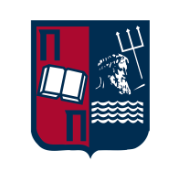Satellite Communications |
|
|---|---|
| Professors | Athanasios Kanatas Demosthenes Vouyioukas |
| Course category | CSM/TEL |
| Course ID | DS-303 |
| Credits | 5 |
| Lecture hours | 3 hours |
| Lab hours | 2 hours |
| Digital resources | View on Aristarchus (Open e-Class) |
Learning Outcomes
Aim of this course is the understanding of methods for the analysis and design of satellite communication systems. By concluding the course, students are able to
- understand the specific features of satellite communication networks as well as their application field
- familiarize with terms and techniques for the evaluation of the performance and of the availability of satellite links
- identify, describe and distinguish the characteristics of different orbits
- analyze and design links of particular telecommunication requirements
- analyze and design appropriate criteria, on the computation of performance threshold values for the links, on the comparison of alternative implementation plans and the evaluation of the final performance of digital systems
By concluding the lab sessions students are able to
- use mathematical tools, identify and apply theory to real-world problems
- design and implement simple link budget models
Course Contents
Initially, the basic elements of the orbit mechanics are given (Kepler orbits, motion equations, track parameters, Earth’s orbit, relative satellite and earth geometry and the parameters determining the relative position of earth stations and satellite). Next, the basic principles of Satellite Link Analysis and Design are discussed (typical antenna parameters, transmitted power, received signal power, link budget for clear sky conditions, factors affecting transmission, noise and its impact on satellite telecommunications, quality indicator reception equipment, techniques for compensating the effects of the transmission medium, signal to noise ratio for end-to-end radio-links, power gain at the satellite). Also, the most common broadcast techniques are presented (techniques mainly for digital broadcasting of baseband signals, modulation and applications in telephone and television systems). Finally, the most frequently used Multiple Access Techniques in Satellite Networks (FDMA, TDMA, CDMA) are analyzed.
In addition, extra content (in evdoxos.ds.unipi.gr) like articles, audiovisual lectures and Internet addresses, as well as exercises for student’s practice are posted electronically. Case studies, exemplary problems and methods for solving them are presented.
Recommended Readings
- “Satellite Communications”, Book code in www.eudoxus.gr: 9742, Edition: 1st edition/2009, Authors: Pratt Timothy, Bostian Charles, W. Allnutt, Athanasios Kanatas, ISBN: 978-960-7182-23-4, Publisher: A. Papasotiriou & Sia S.A. (1st Book)
- “Satellite Communications: Systems, Techniques and Technology”, Book code in www.eudoxus.gr: 18548809, Edition: 3rd edition/2000, Authors: Maral Gerard, Bousquet Michel, ISBN: 960-8050-20-0, Publisher: A.Tziola & Sons S.A. (2nd Book)
Associated scientific Journals
- ΙΕΕΕ Transactions on Antennas & Propagation
- ΙΕΕΕ Journal on Selected Areas in Communications
- Wiley Journal on Satellite Communications & Networking
- IEEE Communications Magazine

